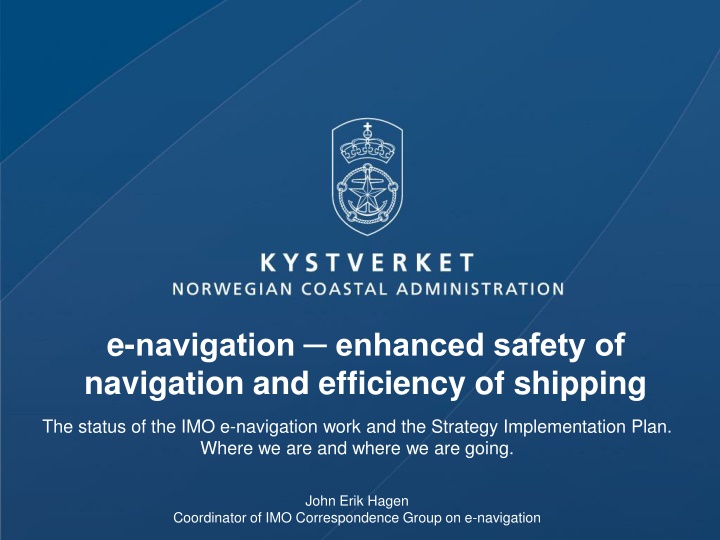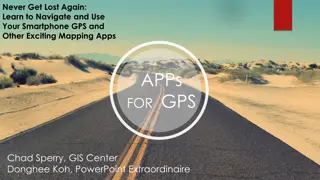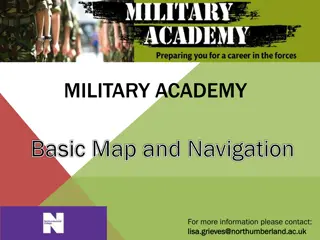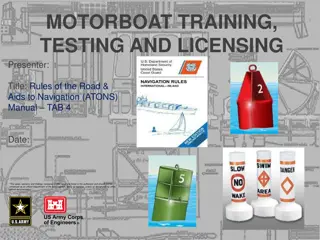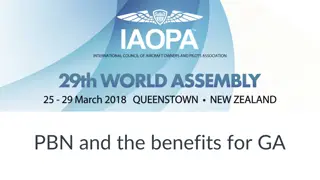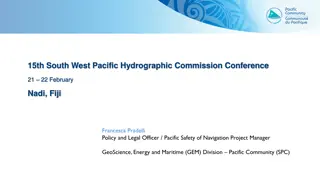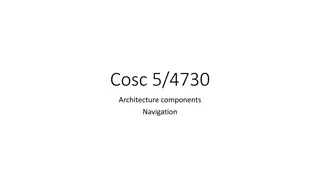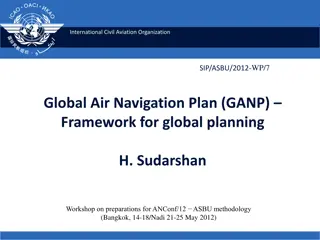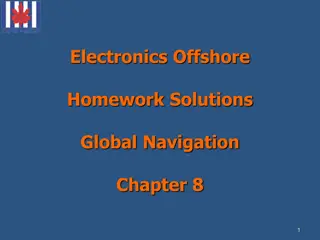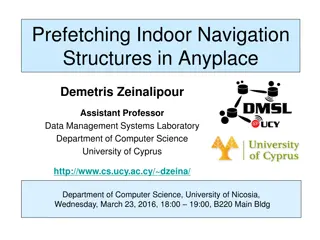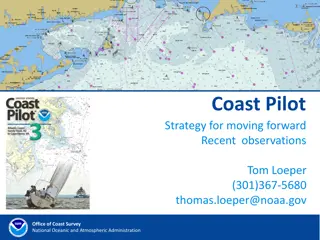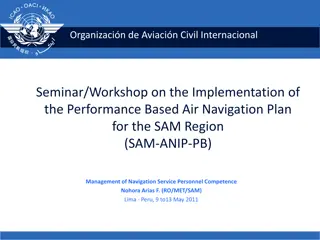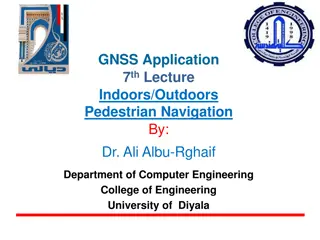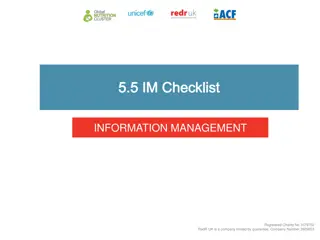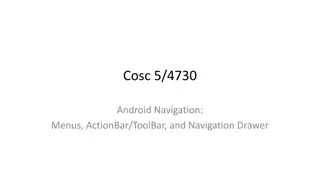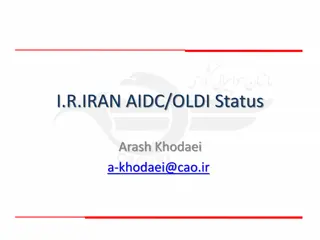IMO e-navigation: Status and Strategy Plan
The status and future roadmap of the IMO e-navigation work and Strategy Implementation Plan are highlighted in this overview. Explore the e-navigation concept, user needs, ship-shore interaction, and bridging the gap in maritime information sharing. User surveys, GAP analysis, and the Nordic approach to bridge the gap are discussed, emphasizing the promotion of safety, security, efficiency, and environmental protection in global shipping.
Uploaded on Mar 13, 2025 | 0 Views
Download Presentation

Please find below an Image/Link to download the presentation.
The content on the website is provided AS IS for your information and personal use only. It may not be sold, licensed, or shared on other websites without obtaining consent from the author.If you encounter any issues during the download, it is possible that the publisher has removed the file from their server.
You are allowed to download the files provided on this website for personal or commercial use, subject to the condition that they are used lawfully. All files are the property of their respective owners.
The content on the website is provided AS IS for your information and personal use only. It may not be sold, licensed, or shared on other websites without obtaining consent from the author.
E N D
Presentation Transcript
e-navigation enhanced safety of navigation and efficiency of shipping The status of the IMO e-navigation work and the Strategy Implementation Plan. Where we are and where we are going. John Erik Hagen Coordinator of IMO Correspondence Group on e-navigation
The e-navigation concept A framework for the effective sharing of essential maritime information. Intends to promote safety, security and efficiency in global shipping, and, consequently, the protection of marine and coastal environments.
e-navigation needs Harmonized and user friendly tools optimized for good decision making Reliable and robust communication Proper coordination of technological development
Roadmap 2011 Selection overarching system architecture Initial GAP analysis 2009 Survey and prioritizing of User Needs 2010 Survey and prioritizing of User Needs, services and tasks Description of functions and services 2012 Final GAP analysis 2013 Risk and Cost/benefit analyses 2014 Proposal for a final Strategy Implementation Plan Final decision of Strategy implementation plan
User surveys User surveys carried out by several Member States and international organizations Identified areas for improvements Mariners and land-based personnel participated 24 main categories of user needs were identified
Ship-shore interaction The use of IHO S-100 standard An overarching e-navigation architecture in 2012 A Common Maritime Data Structure An IMO/IHO Harmonization Group on Data Modelling
The GAP Status Future We know where User Needs tell we are us where we want to go
How to bridge the gap (the Nordic way)
GAP analysis and references to be taken into consideration, provided by MSC or NAV 1. User Needs 2. Aspects (MSC 86/23/4) 2. Key elements (NAV 54/25/Annex 12) 3. Core objectives (NAV 54/25/Annex 12) 4. Relevant functions (NAV56/WP.5/Rev.1/Annex 1) 5. Operation area (as identified for Maritime Service Portfolios MSP)
Gap analysis delivered 87 gaps identified based on user needs Four areas for improvement: Operational, technical, regulatory and training Main categories identified: Information and data coordination Effective and robust communication and data transfer Navigation systems and onboard equipment Ship reporting Training and usability Traffic monitoring Could be used as reference in development of new products
Workshops Monaco: Focused on harmonization and standardization of e-navigation information based on a common global standard. Singapore: Trials conducted for exchanging information electronically between Vessel Traffic Service centre and ship based on the IHO S-100 standard. Haugesund (Norway): Discussed the need for communication in Polar Regions based on electronic exchange of ship-shore information. Trials conducted to survey communication coverage in polar regions.
How to bridge the e-navigation gaps and identify solutions? User Needs Status Solutions With reference to: Aspects Key elements Core objectives Relevant functions Operational areas
Prioritized main solutions Solution 1: Improved, harmonized and user-friendly bridge design Solution 2: Means for standardized and automated reporting Solution 3: Improved reliability, resilience and integrity of bridge equipment and navigation information Solution 4: Integration and presentation of available information in graphical displays received via communication equipment. Solution 9: Improved Communication of VTS Service Portfolio.
The way forward If you know the direction, and you take it step by step, - then _ _ _ _
The next delivery File:VTS Waalbochten.JPG Risk and Cost/Benefit analyses to be delivered to NAV 59 The prioritization of main solutions to achieve workable and efficient results is the basis for the analyses
Work towards 2014 Risk analysis Cost/benefit analysis Development of: Maritime Service Portfolio Guidelines for testing usability Guidelines for test-beds Guidelines for quality assurance of data Strategy Implementation Plan
The Strategy Implementation Plan 1. Identification of responsibilities 2. Transition arrangements, 3. A phased implementation schedule 4. Priorities for deliverables 5. Proposals for a systematic assessment of the development of new technology 6. A plan for the requirements of e-navigation in the longer term, 7. Proposals on public relations 8. Identification of potential sources of funding
